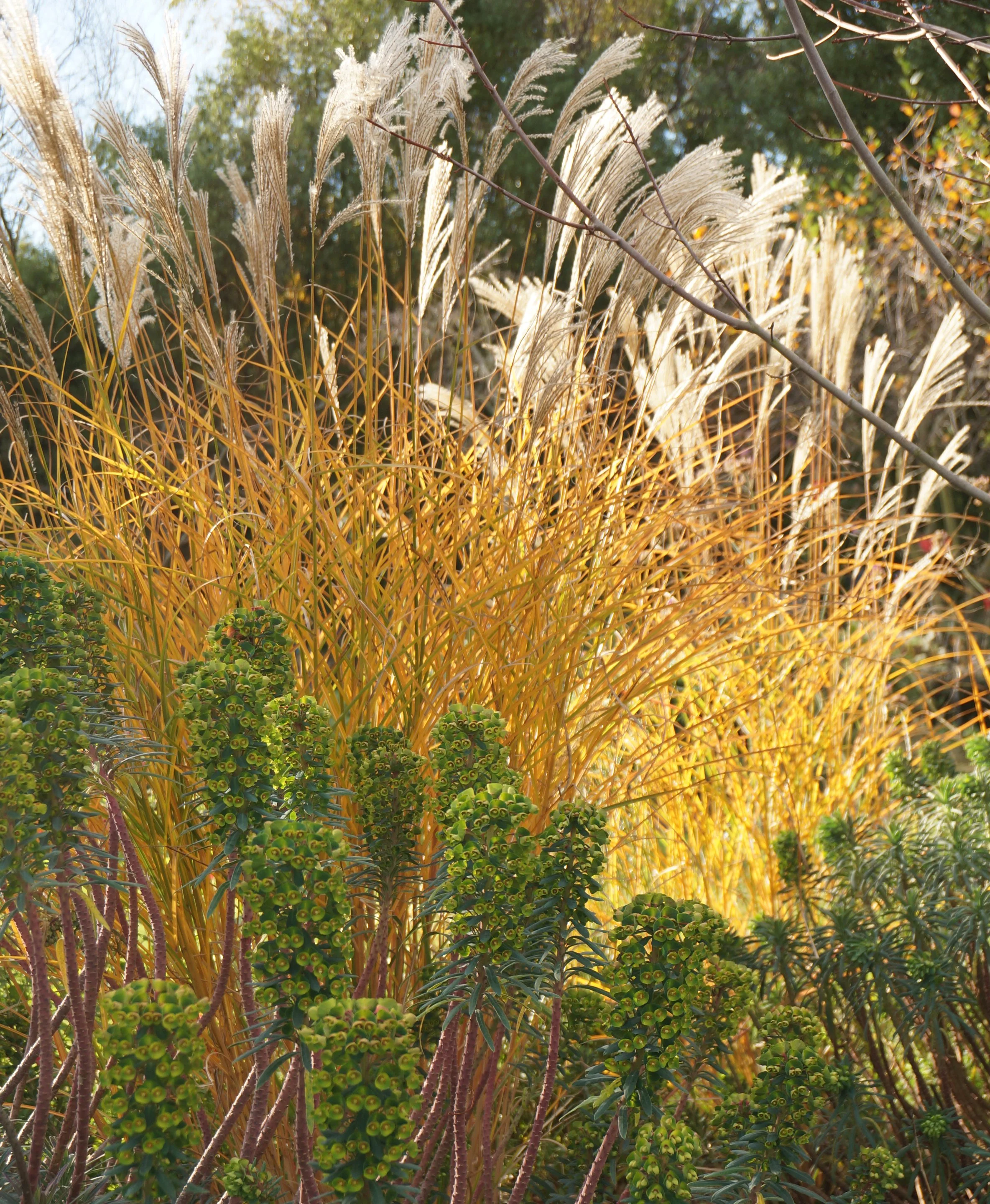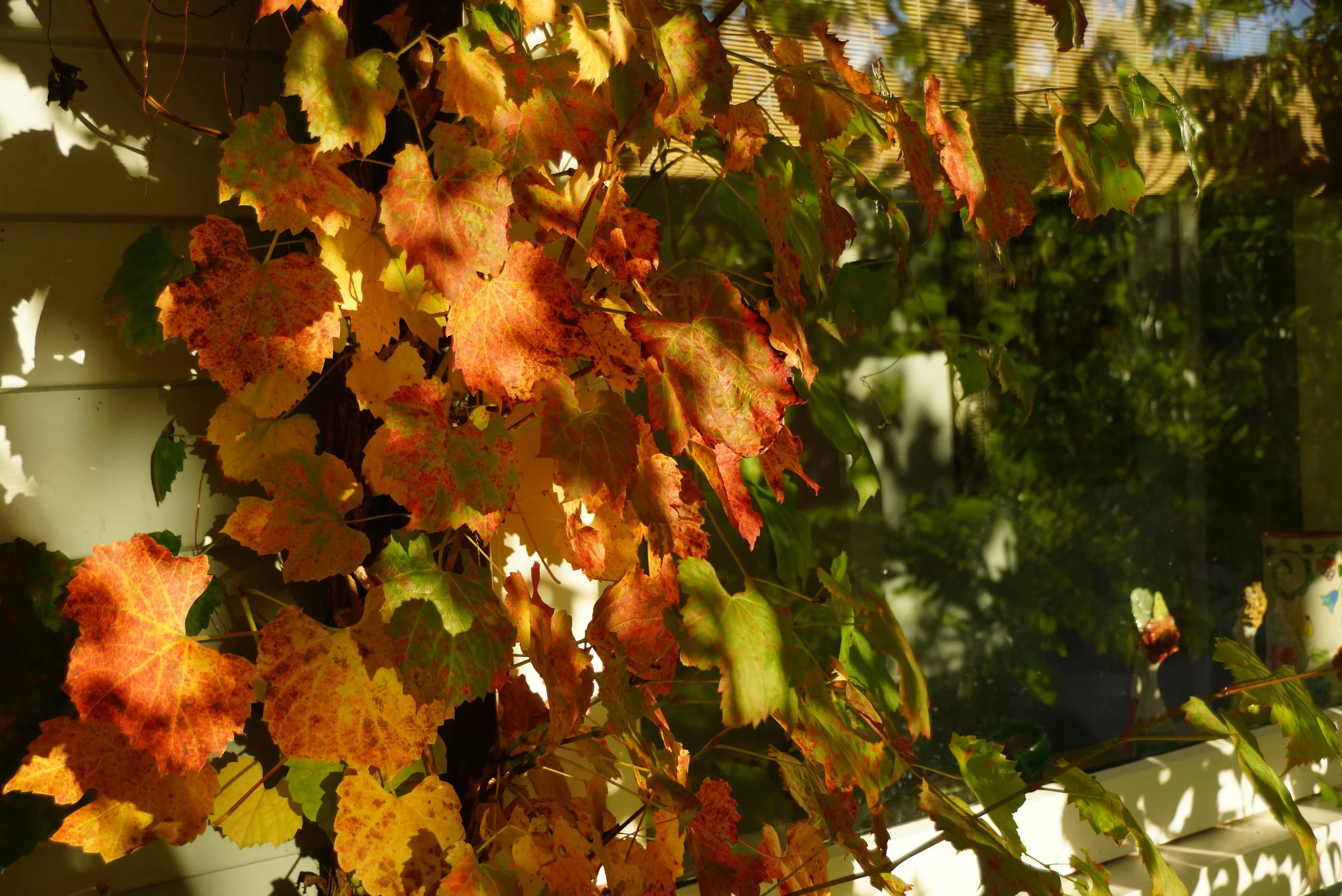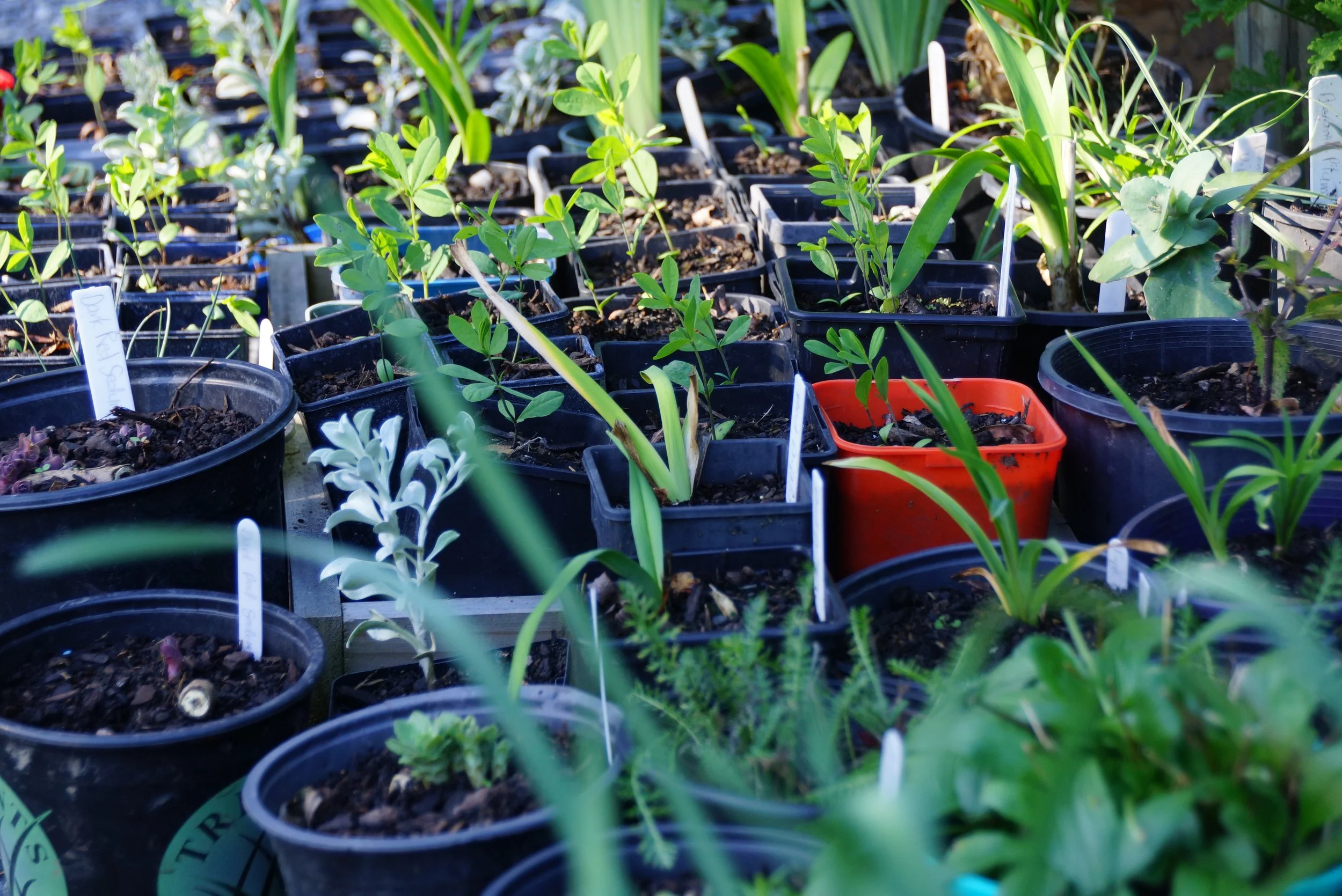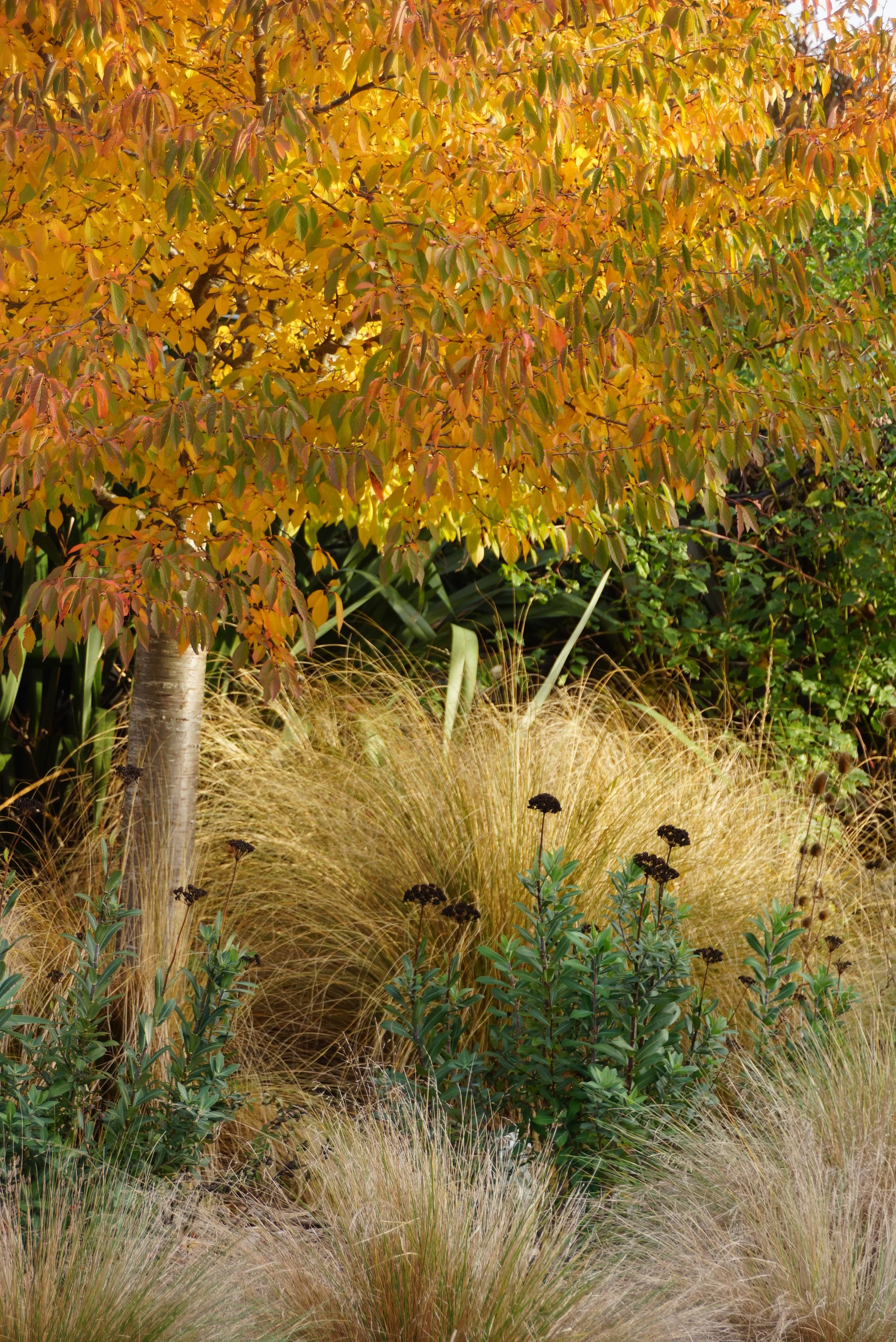JENNY COOPER’S COLUMN : ‘FUN BUT STICKY’
It didn’t take too much arm-twisting to rope my friend Jenny Cooper into writing a monthly column for Unearthed.
She has been outrageously generous in sharing her knowledge with me and, as a result, I have felt such an urge to push her voice forward for more gardeners to benefit. Lucky for us she barely resisted when I peer pressured her onto Instagram and from there I watched her find the perfect format for her relatable, advice-laden and often funny writing which flows out of her so naturally.
Once a month Jenny will share what is on her garden mind - inspirations, challenges, jobs and ideas.
Click the button below to learn more about Jenny’s beautiful and somewhat experimental garden the Blue House in Amberley, North Canterbury.
Words and imagery by Jenny Cooper.
@bluehouse_amberley
The grass border in its textural late-season glory!
If you are not currently gardening, can you write a garden column? This is my dilemma.
May-June are an odd time of year for me, I often don’t feel like gardening at all. I haven’t put a spade in the soil in over 6 weeks so my ‘Garden Diary’ is empty.
The garden has a quiet, slightly sad flavour at the end of autumn. It is drawing in upon itself, storing precious energy, the tide is going out and it truly does not want to be disturbed. The lack of daylight has a similar effect on this gardener. I want to sit quietly, somewhere warm, watching the leaves, thinking about the past garden year, planning my next steps.
The flamboyance, generosity and subtlety of autumn colour almost calls for reverence. Every day the viburnum leaves stop me in my tracks, with their smokey purple tones. The ornamental grapes are a riot of colour. It seems rude to interrupt it all with my spade and secateurs. I’m happiest watching the last of the autumn leaves fall one by one, fully loving the last glowing embers of summer as the colours ripple and change across the garden.
(All the while the more uptight side of me thinks, I must come back and rake these up next week.)
Golden leaves of Prunus x yedoensis ‘Mountain Haze’ blossom tree, deep burgundy leaved hebe ‘Santa Monica’, Chionochloa rubra red tussock grass native to NZ - this is Jenny’s favourite grass being so architectural and self-cleaning but it does need supplemental water at times. Bupleurum furticosum peeping up in the front with Euphorbia wulfenii behind hebe, with the purple-tinged leaves of Viburnum plicatum.
Tap the links to read more about bupleurum and euphorbia.
“The flamboyance, generosity and subtlety of autumn colour almost calls for reverence. Every day the viburnum leaves stop me in my tracks, with their smokey purple tones. The ornamental grapes are a riot of colour. It seems rude to interrupt it all with my spade and secateurs.”
Ornamental grape.
There have probably been wonderful things happening in the outer reaches of the garden but they are happening without my help, or even my knowledge. It is not because of the - 2C degree cold - I usually love winter gardening and prefer a cold sunny day to a hot sunny day. It isn’t the mud, though parts of the garden are very wet.
Is my down-tools partly the result of the enormity of the task ahead? This does fill me with slight panic. Late autumn is when I really should be doing all my major plant shifting. I have several hundred baby plants in my nursery, waiting to go into the autumn soil. I do the bulk of my planting before winter to allow plants to get their roots established, before the big North Canterbury dry begins. We can begin to dry out as early as October, and I am expecting an El Nino year, so early planting is especially important.
Carefully tended seedlings ready to go into the ground.
Dry dark seedheads Bupleurum furticosum amid Chionochloa rubra red tussock grass and Poa cita - both NZ natives.
But this gardener is not really in the mood for planting, or chopping down, or trips to compost heaps via a muddy path, dead leaves catching on all the shrubs as I go.
I open the door, see my gumboots waiting, think ‘Yuck’, and go back inside.
I do recognise this autumn pattern and I know that I haven’t given up the garden for good. One day soon something will happen that will make me want to be out there, lugging stuff around the garden once again. It might be a particular blackbird song that I hear mostly in spring, which never fails to lift my heart. It might just be a sunny winter day and coming across the first hellebore flowers unfurling above the wet leaves.
And then all the missed weeks will not matter at all.
Meanwhile, seed heads are still standing, the tall miscanthus grasses are looking lovely, and the garden is full of soft golden colours - there is plenty to still enjoy, before the big chop begins. I am better to sit and enjoy, and trust that the garden WILL have something new to interest me, sometime soon.
Seedheads, grasses and late flowering plants in early winter.
“Couch gardening is not a waste of time but a source of fresh ideas. I think my best gardening is done while sitting and mulling. Why do I love this one area with nothing but a simple sweep of hakonechloa grass, but am constantly fiddling with this other small bed, with 20 different varieties in it?”
The grass border sinking into winter.
So I have been indulging in some couch gardening. On a wet cold windy day here in Canterbury, frankly the images coming from the Northern Hemisphere summer easily seduce me away from my own patch. Chelsea Flower Show on YouTube? Yes please.
I treated myself to Michael McCoy’s recent online garden design symposium Principles of Garden Design. It was $100, so quite a luxury, but worth it.
It was an online discussion between Michael “The Gardenist” McCoy and UK and Australian garden designers Andy Sturgeon, Annie Guilfoyle, James Basson, Barbara Landsberg, Andrew Laidlaw and Fiona Brockhoff.
I am slowly working my way through over 9 hours of material, in the evenings with headphones on, while Chris watches Gerard Butler et al. Michael McCoy is a great interviewer, funny, self-deprecating and very personable, but also passionately interested in what makes good design for home gardeners.
Each designer is reinforcing, in their own way, some of the key principles that we all know, but do not apply!
Use fewer plant varieties, repeat plants, bring your gardens away from the edges, and don’t be scared of planting in the centre. All good stuff that I need reminding of, especially in winter when the bones of the garden start to reappear and I can ‘see’ the garden more clearly. A garden isn’t just about the individual plants but the shapes they create, and the way these shapes can draw us out into a garden, encourage us to move, to pause, to sit.
Action will always eventually happen.
I am too easily seduced by a curious, hard-to-source, dry-loving oddity that I might find fascinating, but which won’t add to the overall beauty and flow of the garden. But the plants that spark curiosity also add richness to a garden. It is an eternal balancing act.
Repetition, simplicity.
Michael says he can’t think of a single owner-designed garden that would not benefit from having half the number of species, planted at twice the frequency.
And if I’m being honest, I can think of many areas in my garden where I have made major mistakes, where the space is awkward, and where there is no clear purpose to an area or no clear destination. Paths peter out or are hard to navigate. Planting is fussy and contradictory, with too many species and too many forms. This is not discouraging but is one of the things I love most about the art of a garden - the intellectual challenge of figuring it out.
It can take years to puzzle out why one area is working and another is not, and I don’t know a single committed gardener who is perfectly happy with their space. Couch gardening is not a waste of time but a source of fresh ideas. I think my best gardening is done while sitting and mulling. Why do I love this one area with nothing but a simple sweep of hakonechloa grass, but am constantly fiddling with this other small bed, with 20 different varieties in it?
And when the solution to a problem comes to me, such a light bulb moment, and I want to leap up from the couch and put it into practice immediately.
BEFORE mulching in the woodland area
BEFORE mulching in the woodland area
AFTER mulching in the woodland area
AFTER mulching in the woodland area
The freshly mulched and tidied up stems of Cornus alba ‘Sibirica’
Anyway, this story has a happy ending as we now come to the ‘Fun but sticky’ part of the heading.
I found a source of reasonably priced woodchip mulch last week, and suddenly I sprang into action, gumboots on, arms flailing, and every tool in the shed in use. Sitting and mulling? That was last week’s news!
I have left the tall grass borders to stand for another month, while they still have form and colour to offer. But the big chop has now begun in the shady borders, despite sticky mud underfoot. These areas are the spring gardens, the first to come alive after winter. They are full of hellebores, bluebells, and snowdrops - not well marked, it seems, as I have already put my spade through the biggest clump! Luckily bulbs are forgiving. Woodland anemones and shade-loving geranium are already stirring under the soil, and the cheerful buds are getting fatter. The first hellebore is in flower and I greeted it like an old friend, which it is. I can remember the day I bought this plant, 10 years ago, from E. Gay Henderson’s wonderful inner-city garden.
After a mad couple of days, this first area is cleared, some major shifting is done and everything is tucked up under a lovely blanket of fresh willow woodchip mulch. Just having this small corner of the garden done is enough to make me want to continue. Trees are being limbed up, and after a daylong marathon, the red-stemmed dogwood Cornus alba ‘Sibirica’, which had become an impenetrable copse, has been thinned back to elegant slender red stems. The discarded cornus then gets mulched and returned to the garden, it the ongoing, healing, life-affirming cycle that is a garden.
It looks like, after my autumn hiatus, I’m off again, on another happy garden year!
Provided links to plants are chosen by Julia with no bias - simply to connect with the best imagery and information to aid the reader on that plant.
No affiliate or sponsored links are included - please beware they may contain some seasonal information from other countries that differ from the one you are in!













